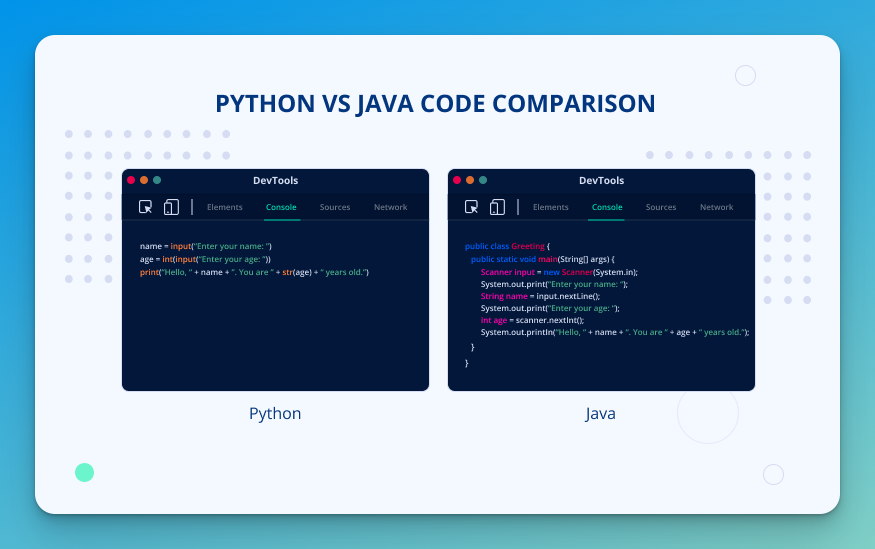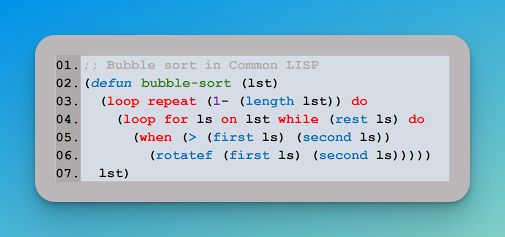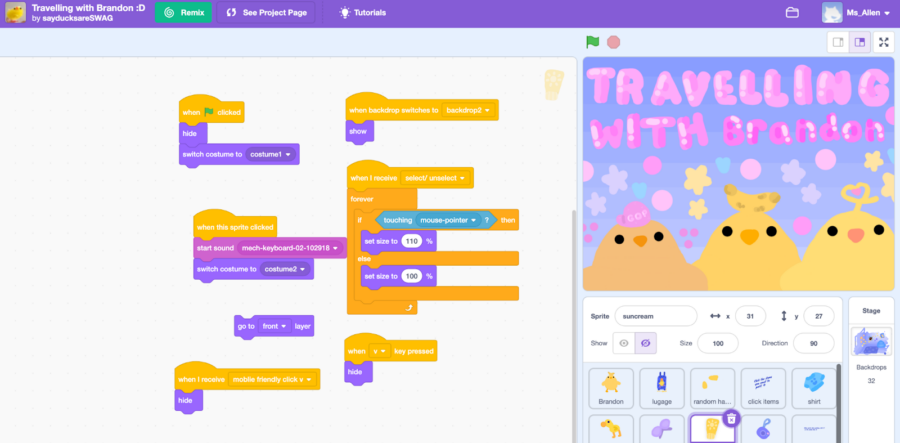Most people have probably heard the word syntax before but non-programmers may not be familiar with how the term applies to programming. Syntax is the set of programming language rules for how the computer interprets your code.
Syntax in different languages
Every programming language is different. For example, here is the same function defined in Java (on the left) and Python (right):

The result of the computer’s interpretation is the same, but one is simpler. The Java syntax requires far more semicolons; curly braces {} and parenthesis (). It also includes some keywords that are not immediately obvious – public and void in this example. But Java is far from the most difficult language for syntax. Here is a simple function in Lisp:

Look at all of those parenthesis – that’s why Lisp isn’t a language for first time programmers! It requires an in-depth understanding of recursion. Recursion isn’t usually introduced in Python and Java until late in high school.
Challenge of Syntax
Many kids are still learning the syntax of the English language, where they need to remember capitalization and punctuation. Compared to coding, the English rules are simple.
At the same time the student is learning programming concepts and logic, they must remember the syntax requirements to make the computer understand their code. Thus, programming syntax is often a barrier to entry. The more brain power devoted to remembering syntax rules and convention, the less for programming logic. The more keystrokes devoted to unnecessary keywords, semicolons, parenthesis, and braces, the longer it takes to make a program for these beginning students.
Syntax errors are extremely frustrating for all programmers, but especially so for a first time programmer. In Java, one semicolon in the wrong place can make an entire program fail. If one of the parentheses is left out at the end of the above Lisp example, the program would crash with an error. The programmer would be required to fix this mistake, which can be a length delay that it is no longer fun.
While learning to debug is important, students have plenty of opportunities to debug logic errors. When it comes to syntax errors, usually these errors aren’t very descriptive and can be very confusing to an inexperienced programmer. The computer tries to guess where the problem is but can be off by more than a couple of lines.
A Washington University professor said it best, “If you forget a comma in your English essay, your teacher doesn’t hand it back and say, ‘I can’t understand any of this.’” Yet that’s exactly what happens in programming!
Making Syntax Work for Beginners
Breakout Mentors recommends considering the burden of syntax when selecting a language for a student’s programming education. For some students we limit syntax requirements as much as possible, for others some an introduction to syntax is worthwhile.
Block-based programming languages play a pivotal role in lowering the barrier to coding by simplifying the syntax and providing a visual, intuitive interface for learners. Block-based languages, such as Scratch or Blockly, use a drag-and-drop approach where users assemble blocks that represent code constructs. This visual representation allows beginners to focus on logical thinking and problem-solving without being overwhelmed by intricate syntax details.
By utilizing a block-based approach, learners can grasp programming concepts more easily. The blocks act as training wheels, guiding users through the logical flow of code and eliminating the need to memorize complex syntax rules initially. These visual components serve as shaped puzzle pieces that fit together, helping learners understand the connections between different programming elements

As learners become more comfortable with the fundamentals, they can gradually transition to text-based languages. They are already equipped with a solid understanding of programming concepts gained through the supportive framework provided by block-based coding. In this way, these languages act as a stepping stone, empowering individuals to bridge the gap between visual programming and more advanced coding languages.
Python is great for middle school students with little prior programming experience or students transitioning from Scratch because it has less syntax than many other typed languages. It also requires that code be organized through indentation which makes code more readable and helps foster good habits. Java has its advantages as a language used in many high school courses including AP Computer Science A and as a language used for Android development, but the barrier to entry is slightly greater than Python.
How can your son or daughter overcome the burden of syntax?
The burden of syntax poses a significant challenge for beginner programmers, diverting their focus from fundamental programming concepts to the intricacies of language rules and conventions. Syntax errors can be particularly frustrating for novices, impeding their progress and potentially deterring them from the joy of coding.
Recognizing this challenge, Breakout Mentors recommends a thoughtful consideration of syntax when selecting a programming language for students. By doing so, mentors can tailor the language to the individual needs of each learner, either by minimizing syntax requirements for some students or introducing syntax gradually for others.
The emergence of block-based programming languages stands out as a transformative solution to mitigate the syntax burden. These languages offer a visual and intuitive interface, allowing beginners to concentrate on logic and problem-solving without the immediate pressure of memorizing complex syntax rules. The metaphor of training wheels aptly describes the role of block-based languages, guiding learners through the logical structure of code and facilitating a smoother transition to text-based languages as proficiency grows. Moreover, the importance of one-on-one mentorship is highlighted, as mentors can select and teach in the language best suited for a particular student’s learning style and pace. This personalized approach empowers learners to navigate the syntax challenge more effectively and paves the way for a more enjoyable and successful coding journey.
If you are interested in discussing the right choice for your son or daughter, please contact us today.